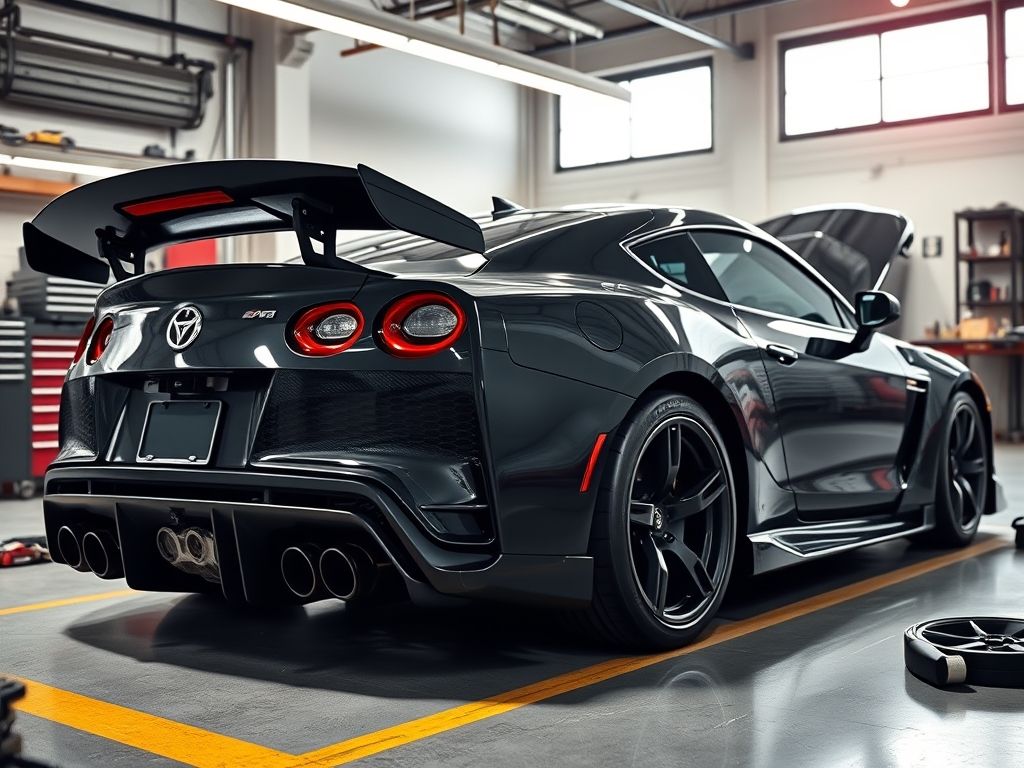The quest for enhanced car performance and maximum driving thrills is a timeless pursuit for automotive enthusiasts. In 2025, with advancements in technology and a growing emphasis on personalized driving experiences, the realm of car modifications is more exciting than ever. Whether you’re aiming to boost horsepower, improve handling, or simply add a touch of personal style, knowing the right performance hacks and essential mods is crucial. This blog post will navigate through the key upgrades that can transform your driving experience, ensuring you get the most out of your vehicle while staying ahead of the curve.
From engine enhancements and suspension tweaks to aerodynamic improvements and braking upgrades, we’ll cover a range of modifications that cater to different performance goals and budgets. We’ll also delve into the importance of choosing the right parts, professional installation when needed, and staying compliant with local regulations. Get ready to unlock the full potential of your car and experience the thrill of driving like never before.
Engine Performance Upgrades
At the heart of any performance-driven car is, of course, the engine. Upgrading your engine can significantly boost horsepower and torque, leading to quicker acceleration and improved overall performance. One of the most popular upgrades is installing a cold air intake system. These systems replace the factory air box with a less restrictive intake, allowing the engine to draw in cooler air. Cooler air is denser, containing more oxygen, which results in a more efficient combustion process and increased power. According to recent data, a good cold air intake can add anywhere from 5 to 15 horsepower, depending on the vehicle.
Another effective engine modification is installing a performance exhaust system. Factory exhaust systems are often designed to be quiet and restrictive, which can limit engine performance. A performance exhaust system, on the other hand, is designed to reduce backpressure and improve exhaust flow. This allows the engine to breathe more freely, resulting in increased horsepower and a more aggressive sound. Many enthusiasts opt for cat-back exhaust systems, which replace everything from the catalytic converter back to the exhaust tips. These systems are relatively easy to install and can provide a noticeable performance boost.
For more advanced engine upgrades, consider options like ECU tuning or installing a turbocharger/supercharger. ECU tuning involves reprogramming the engine’s computer to optimize fuel delivery, ignition timing, and other parameters. This can significantly increase horsepower and torque, but it’s essential to have it done by a professional tuner to avoid damaging the engine. Turbochargers and superchargers force more air into the engine, resulting in a substantial power increase. However, these modifications are more complex and require careful planning and installation.
Suspension and Handling Enhancements
Improving your car’s suspension and handling is crucial for enhancing its overall performance and driving experience. Upgrading the suspension can improve cornering ability, reduce body roll, and provide a more comfortable ride. One of the most common suspension upgrades is installing lowering springs. These springs lower the car’s ride height, which reduces its center of gravity and improves handling. Lowering springs also give the car a more aggressive look.
Another effective suspension upgrade is installing performance shock absorbers or coilovers. Shock absorbers control the movement of the suspension, while coilovers combine a shock absorber and a spring into a single unit. Performance shock absorbers and coilovers offer improved damping and control compared to factory units, resulting in better handling and a more responsive ride. Many enthusiasts opt for adjustable coilovers, which allow them to fine-tune the suspension to their specific driving preferences.
In addition to springs and shocks, consider upgrading your car’s sway bars. Sway bars connect the left and right wheels and help to reduce body roll during cornering. Upgrading to thicker or adjustable sway bars can significantly improve handling and stability. Another important handling upgrade is installing performance tires. Tires are the only point of contact between the car and the road, so upgrading to high-performance tires can greatly improve grip and handling. Look for tires with a low aspect ratio and a sticky tread compound for maximum performance.
Braking System Upgrades
A high-performance braking system is essential for ensuring your car can stop quickly and safely, especially after making engine and suspension upgrades. Upgrading the brakes can improve stopping power, reduce brake fade, and provide a more confident driving experience. One of the most common brake upgrades is installing performance brake pads. These pads offer a higher coefficient of friction than factory pads, resulting in improved stopping power.
Another effective brake upgrade is installing slotted or drilled brake rotors. These rotors help to dissipate heat more effectively than factory rotors, reducing brake fade and improving braking performance. Slotted rotors have grooves that help to remove debris and water from the brake surface, while drilled rotors have holes that help to cool the rotor. Some enthusiasts opt for a big brake kit, which includes larger rotors, calipers, and pads. These kits offer a significant improvement in braking performance, but they are also more expensive.
In addition to pads and rotors, consider upgrading your car’s brake lines to stainless steel lines. Factory brake lines are often made of rubber, which can expand under pressure, leading to a spongy brake pedal feel. Stainless steel brake lines are more resistant to expansion, providing a firmer and more responsive brake pedal feel. Upgrading to a high-performance brake fluid can also improve braking performance by increasing the boiling point of the fluid, reducing the risk of brake fade.

